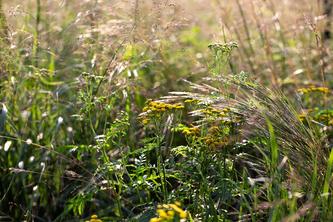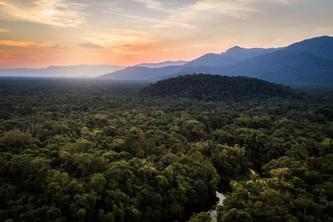
MINNEAPOLIS/ST. PAUL (06/26/2023) — A new study shows that current trends in environmental degradation will lead to large economic losses in the coming decades, hitting the poorest countries hardest. But there is hope: investing in nature can turn those losses into gains.
Researchers from the University of Minnesota and Purdue University published their findings in Proceedings of the National Academy of Sciences, including a novel Earth-economy model to capture global interactions between the economy and the environment. Crucially, these interactions include how nature benefits humans by pollinating crops, providing timber, storing carbon, providing catch for marine fisheries and how those benefits affect the economy overall.
“We have long thought of the economy and the environment as working against each other,” said Justin Johnson, an assistant professor of Applied Economics at the University of Minnesota. “Investing in nature does not stifle the economy, it boosts the economy. But it has been difficult to model those interactions until recently.”
The researchers found:
- Policy options for investing in nature resulted in annual gains of $100–350 billion (2014 USD), with the largest percentage increases in GDP occurring in low-income countries. The policy options examined in this study include removing agricultural subsidies, financing research into improving crop yields and international payments from wealthy countries to poorer countries to support conservation.
- Continued trends in environmental degradation, on the other hand, would result in $75 billion losses annually, with the low-income countries suffering from 0.2% losses in GDP year on year.
The researchers combined a global general equilibrium economic model (GTAP developed at Purdue University’s Center for Global Trade Analysis), with a suite of ecosystem service models (InVEST developed at Stanford University’s Natural Capital Project). GTAP and InVEST are both widely used across the world by governments, non-governmental organizations and the private sector, but putting them together was a significant undertaking.
“Traditional economic models of this kind almost completely neglect the fact that the economy relies on nature,” said Tom Hertel, a professor of Agricultural Economics at Purdue University. “This new study required a detailed understanding of how and where land use patterns change as a result of economic activity, with enough spatial detail to understand environmental consequences of these changes. It is a huge achievement.”
The results from this research highlight how public goods and services provided by the environment are often most important for the world’s poorest, who have less access to alternative options when the environment is degraded. Consequently, investing in nature tends to make the world a more equitable place. This research only looks at a small subset of the ways in which the economy and the environment interact, nevertheless finding strikingly large effects.
“Of course nature provides much more than pollinators, timber, carbon and fish,” said Johnson. “Our future work will incorporate many more ecosystem services, leading to much more informed decision-making. This is just the beginning — we hope to make this kind of analysis a standard tool in a policy-maker’s toolbox.”
Financial support for the study came from the University of Minnesota, Purdue University and the National Science Foundation. Researchers from the World Bank and the University of Victoria also contributed to this study.
About the College of Food, Agricultural and Natural Resource Sciences
The University of Minnesota’s College of Food, Agricultural and Natural Resource Sciences (CFANS) strives to inspire minds, nourish people, and sustainably enhance the natural environment. CFANS has a legacy of innovation, bringing discoveries to life through science and educating the next generation of leaders. Every day, students, faculty, and researchers use science to address the grand challenges of the world today and in the future. CFANS offers an unparalleled expanse of experiential learning opportunities for students and the community, with 12 academic departments, 10 research and outreach centers across the state, the Minnesota Landscape Arboretum, the Bell Museum of Natural History, and dozens of interdisciplinary centers. Learn more at cfans.umn.edu.
- Categories:
- Agriculture and Environment





